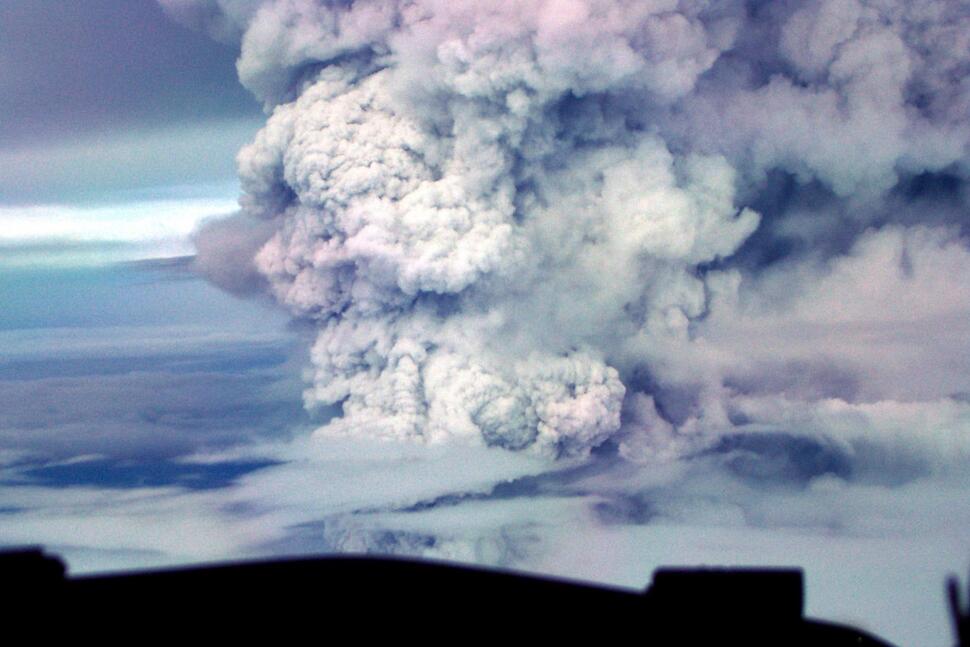The tallest volcano in Papua New Guinea is no longer erupting, but thick ash is still billowing into the sky and covering neighboring palm trees and roofs.
Tuesday saw a decrease in the tsunami fears caused by the tallest volcano in Papua New Guinea, but thick ash continued to billow into the sky, covering nearby roofs and palm trees.
Mount Ulawun, one of the most active volcanoes in the South Pacific, erupted on Monday, launching ash plumes up to 15 kilometers (50,000 feet) into the air.
Although the eruption has been downgraded from the maximum alert level since Monday, according to Papua New Guinea’s Geohazards Management Division, there are still no signs that it is ending.
International attention was drawn to the eruption on the isolated island of New Britain in the northeast when Japanese officials stated they were evaluating the possibility of tsunami waves reaching the Izu and Ogasawara islands.
However, a number of volcanologists don’t think Ulawun will ever be a threat like this. The threat, according to Papua New Guinea’s division, was “nil.”
Because of the volcano’s distance from the ocean, according to Brad Scott, a volcanologist with the New Zealand research institute GNS Science, the “tsunami risk is incredibly minor.”
However, the division stated that the volcano, which is 2,334 meters (7,657 feet) above sea level, is still active and that the eruption could go on forever.
The ash plume rose at least 5,000 meters (16,000 feet) on Tuesday, according to the Papua New Guinea division, before vanishing into cloud cover.
The wind can carry the tiny volcanic particles in ash plumes great distances, endangering aircraft. On Tuesday, a dense plume reached tens of kilometers (miles) northwest of Mount Ulawun.
An email inquiring as to whether air travel was impacted was not promptly answered by the Papua New Guinea Civil Aviation Safety Authority. The closest major airports, in the Solomon Islands’ capital of Honiara and the nation’s capital of Port Moresby, were both showing regular activity on Tuesday, according to the FlightAware tracking website.
Approximately 2,300 kilometers (1,400 miles) southwest of Ulawun, the Volcanic Ash Advisory Center in Darwin, northern Australia, was among the first to use satellite technology to detect the eruption.
Darwin is one of nine such centers worldwide that advise the aviation sector on the whereabouts and flow of potentially dangerous volcanic ash.
The division stated that Bialla, the closest major town, is located 47 kilometers (29 miles) to the southwest among palm oil plantations on the slopes of Ulawun. An email requesting comment was not immediately answered by the Bialla-based company Hargy Oil Palm Ltd.
According to the division, thick layers of black ash were building up on roofs and causing leaves on palm oil plantations close to the volcano to droop.
The World Bank estimates that there are more than 13,000 people living in Bialla.
The “Ring of Fire,” an arc of seismic faults encircling the Pacific Ocean, is where most earthquakes and volcanic eruptions worldwide take place, and this is where Papua New Guinea is located. Since the 1700s, Ulawun has erupted numerous times; the most recent major eruption occurred in 2019.
According to the division, there have never been any recorded fatalities from Ulawun’s eruptions.
However, the division noted that significant effects such as service interruption, infrastructure damage, and population displacement were frequent.

